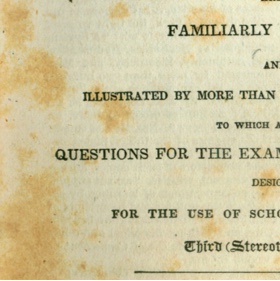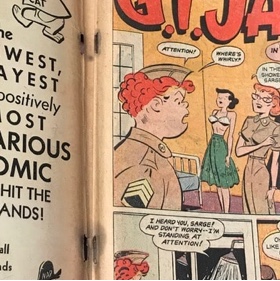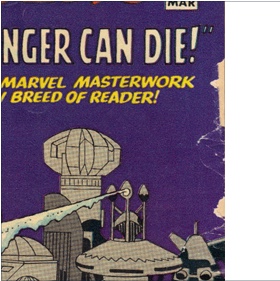Grading Comics 101
A comic book’s condition directly affects its value.
Whether you’re flipping through the comics in your collection or at the dollar bin at your local comic shop (LCS), everyone wonders what their comics are worth. Of all the factors to consider, your comic’s condition is key. The value of a $1,000 dollar comic book can drop to nearly nothing if the comic is in bad shape.
In this article we’ll cover:
- How the industry standard grading system works
- The difference between Certified (i.e. “Graded”) and Uncertified (i.e. “Raw”) comics
- Typical defects and flaws a comic book may have
- How you should list your comics when you’re trying to sell them online
How The Grading System Works
The most commonly used grading standard for comics is the Overstreet standard ONE (Overstreet Numerical Equivalency) grading system. Like the QWERTY keyboard, it doesn’t matter if there are better systems out there, this one has been around the longest and is what the vast majority of comic retailers use. So if you’re going to talk the talk, you should probably spend some time understanding how it works. The ONE grading system breaks down into the following condition types (rank ordered from best to worst):
10.0 Gem Mint (GM)
9.9 Mint (M)
9.8 Near Mint / Mint (NM/MT)
9.6 Near Mint +(NM+)
9.4 Near Mint(NM)
9.2 Near Mint -(NM-)
9.0 Very Fine/Near Mint (VF/NM)
8.5 Very Fine +(VF+)
8.0 Very Fine (VF)
7.5 Very Fine – (VF-)
7.0 Fine/Very Fine (FN/VF)
6.5 Fine + (FN+)
6.0 Fine (FN)
5.5 Fine – (FN-)
5.0 Very Good/ Fine (VG/FN)
4.5 Very Good + (VG+)
4.0 Very Good (VG)
3.5 Very Good – (VG-)
3.0 Good/Very Good (GD/VG)
2.5 Good + (GD+)
2.0 Good (GD)
1.8 Good – (GD-)
1.5 Fair/Good (FR)
1.0 Fair (FR)
0.5 Poor (PR)
As you start evaluating the comics in your collection, keep in mind that the vast majority of modern comics you’ll see for sale fall into the Near-Mint category. But, this may be different when considering older, Golden Era comics.
The Difference Between Certified and Uncertified Comics
In addition to grade, there are a few other aspects that you need to consider as you estimate your comic’s value. First, is your comic Certified or Uncertified?
Certified Comics (AKA: “graded”, “slabbed”)
Certified comics are comics that have been professionally assessed and graded by a 3rd party grading company. These companies (e.g., CGC PGX, CBCS) examine your comics, place them in sealed protective cases, identify any issues, verify autographs, and assign them a grade (using the system shown above). Typically the grading process takes anywhere between a few weeks to months depending on the company’s backlog with the average cost ranging from $20-$45. Across comic communities, there’s heated debate as to which grading company is best, so do some research before jumping in. One of the benefits of getting your comic graded is that they typically sell for more than an uncertified one. Why is this? Aside from the initial cost of grading itself, slabbed comics help to eliminate the friction between buyers and sellers ensuring that buyers are getting what they pay for. In a world where a 9.8 can sell for hundreds more than a 9.6 that certainty sure helps. However, keep in mind that grading a comic just to sell it for more can backfire. There are plenty of examples of graded comics selling for less than the grading cost itself.
Uncertified Comics (AKA: “ungraded”, “raw”)
Uncertified Comics are comics that have not been verified by a professional grading company. When you buy a comic at your local comic shop (LCS), you buy it “raw.” There’s both pros and cons to owning ungraded comics. Firstly, you can typically buy them more cheaply. These make up those “great finds” you might find in a dollar bin at your LCS. Of course, it’s on you to judge it’s value and condition. The con is that you won’t be able to sell it for as much as a certified comic and if you do, you’ve opened yourself up to being accused of being incorrect in your assessment of the comic’s condition.
When it comes to grading, the most important factor to remember is that grading and evaluating a book is a very subjective practice. Even within the professional grading companies, the official grade a book will obtain is an average grade calculated between several different graders. When it comes to grading your personal collection or reviewing a possible purchase, it’s important to educate yourself on the various flaws that a book can include. Most of this simply comes from experience and exposure to seeing the impact a flaw can have on the value of your comic book. This leads us to our next section, which we’ve written to help you understand what common defects and flaws you might encounter on your hunt for comics.
Typical Defects and Flaws
As you look at a book in the store or in your collection, you’ll want to examine them for flaws and defects. Flaws (e.g. creases, folds, etc.) typically lower the value of your comic book. Whereas, some defects (e.g. recalled comics, printing errors, etc.) can actually increase their rarity and thus value (but it can go either way). In this section, we’ll explore some common flaws and defects and how they might impact the value of your comic.
Common defects and flaw include:












Be sure to keep an eye out for these common flaws when purchasing comics. Also, keep in mind that the most common of these issues arise from poor moisture control and insects. Protect the value of your comics by always storing them properly!
Determining a Grade For Your Comics
When purchasing and selling a book, please keep in mind that novice collectors will frequently assign their book with a blanketed MINT or NEAR MINT grade. This can be quite misleading since the majority of all books printed fall at or below NEAR MINT to begin with. A 9.8 (the most sought after and standardized grade for modern books) is considered NEAR MINT/MINT and can be very obtainable, but it is greatly overused. We at COVRPRICE like to take the following approach in assessing flaws and defects when determining a fair grade of your book:
Step 1: Start with assigning a NEAR MINT/MINT 9.8 to your book.
Step 2: Proceed by counting each flaw. With each number, move one notch down the grading scale.
For example, You notice a spine crease on your comic so you lower your estimate from a 9.9 to a 9.8. If it breaks color, then a 9.6. If you find a second crease, 9.4. A slightly blunted corner, 9.2. This is not a perfect measure, but it can give you a clearer sense of your book’s condition. The size/scale of the flaw can carry more or less weight grade wise (see below). Some professional graders do allow a 9.8 to have a small flaw. Never expect your book to be MINT 9.9 or 10.0. It may look perfect, but these grades and very uncommon (except for BATMAN DAMNED #1).
Keep in mind that certain flaws and/or damage can be more significant than a one-grade drop. For example, water damage can reduce a NEAR MINT (9.6) book to FAIR (1.0) very quickly. If a spine crease breaks color and extends throughout the book to the back cover, that will quickly drop your grade as well. While this practice is not perfect, it’ll help you in determining a fair market value for your book.
Listing Your Comics to Sell Them Online
When selling a book from your collection, we recommend listing your Uncertified comic at least one grade below what you think it might actually be at. We’ve found it’s better to have your buyer be happy with their purchase than to have to deal with refunds and bad reviews. Always carefully inspect the front cover, inside pages, and back cover. Never assume the front cover reflects the entire comic’s condition.
Also, be sure to ask your comic-loving peers and LCS for an assessment of your comic book’s condition. If you’re not confident in your grading, having the ability to submit a book to (or purchase a professionally graded book) from one of the industries official grading companies (see links above) can be the best way to protect your investments.
After reading the first half of this article, you should have a better grasp as to any flaws or defects your comic might have. Now comes the fun part: Should you sell it? When selling your comic you first need to get a sense of what it’s worth. By visiting COVRPRICE.com you can quickly find the estimated sales value of your comic based REAL sales data collected from a variety of comic marketplaces across the web. (Yes, we just plugged our own company) With this value in mind, you’ll then need to decide if your comic is worth selling. Of course, this is completely up to you. If you decide on selling it, you’ll need to find a marketplace to post your comic. There are pros and cons to each marketplace depending mostly on the price you’re asking for your comic, so do a little research. However, when you do list your comic for sale, you need to make sure your post is clear and descriptive. COVRPRICE recommends the following format (regardless of where you choose to sell).
For Uncertified (i.e. “raw”) Comics
| Comic Title Info | Issue # | Variant Info (if needed) | Additional Description (if needed) |
| The Amazing Spider-Man Vol.2 | #300 | Venom Variant – Todd McFarlane | Above Average Condition |
| Superman | #75 | Platinum Edition Variant | Death of Superman / NM- |
| NYX | #3 | 1st Appearance of X-23 / Near Mint |
For Certified (i.e. “Graded) Comics
| Comic Title Info | Issue # | Grading Company Info | Variant Info (if needed) | Additional Description (if needed) |
| Captain Marvel | #17 | CGC 9.8 | 2nd Print | |
| All-Star Comics | #8 | CBCS 9.6 | 1st Appearance of Wonder Woman | |
| The Amazing Spider-Man | #129 | PGX 9.6 | 1st Appearance of The Punisher |
When you follow this approach you clearly inform your potential buyer what they can expect and reduce your chances of having your comic returned and your sale voided.
In Summary:
Your comic’s condition plays a huge role in determining its overall value. Being able to use the industry standard grading scale will allow you to speak knowledgeably with the folks at your local comic shop and online. Being able to identify the defects and/or flaws of your comic helps you to determine its most likely grade, which becomes vital for buying or selling. If you decide to sell your comic, consider getting it graded. Understanding the value of professional grading and how it can increase your sales value is important. Finally, when selling your comic online, following the listing structure provided here will ensure potential buyers are able to quickly find and buy your comic. Happy hunting!








